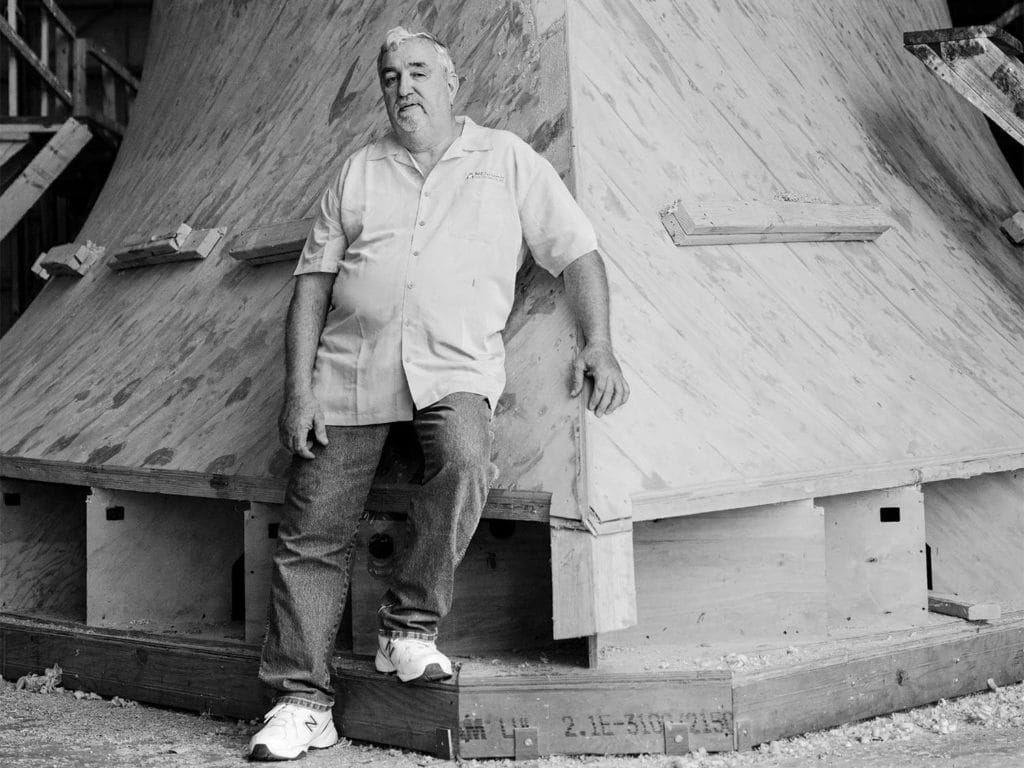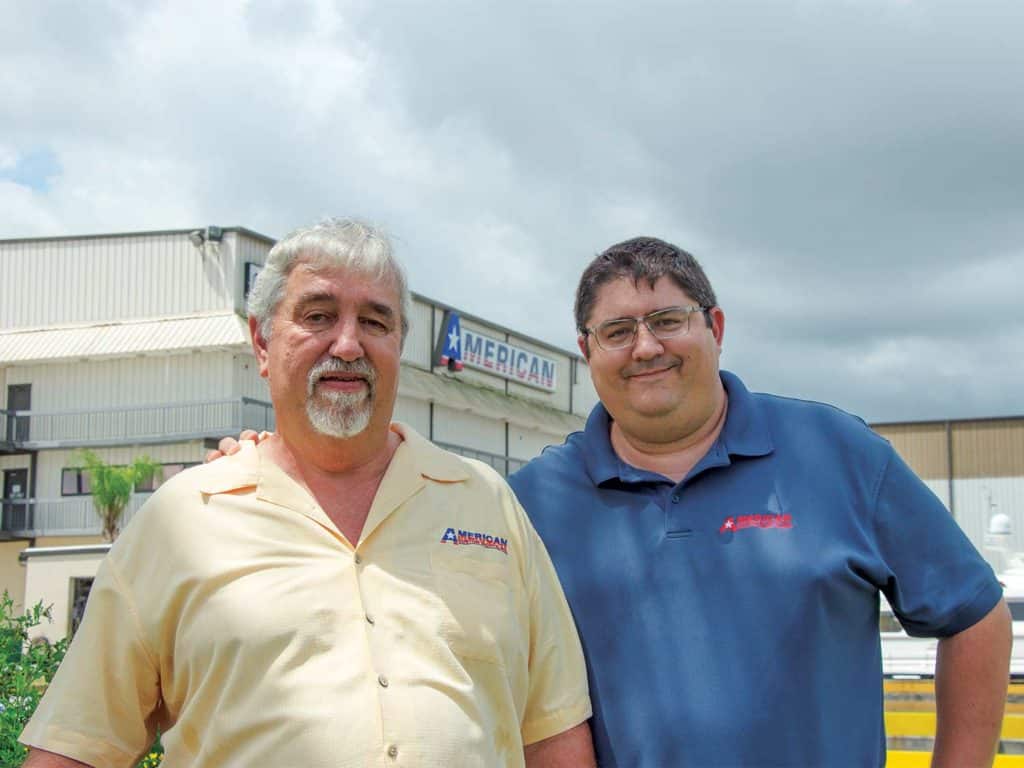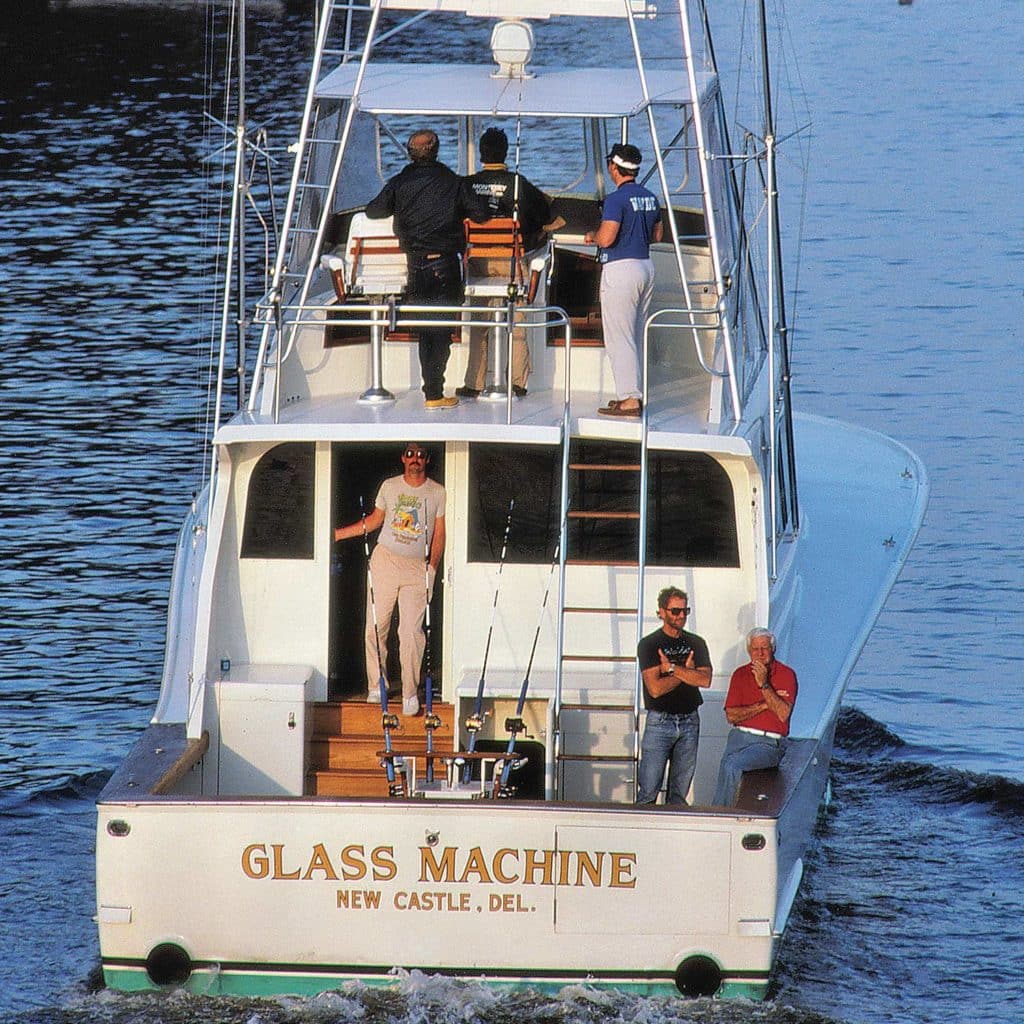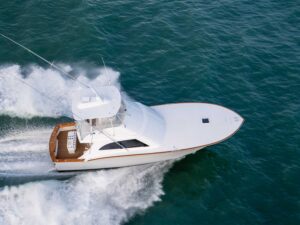
For nearly 30 years, the unofficial sign of your arrival in South Florida has been the huge American flag proudly flying over American Custom Yachts, a sprawling 70-plus-acre full-service facility built on the St. Lucie River, splitting I-95 and Florida’s Turnpike in Stuart. A Vineland, New Jersey, native turned Florida transplant, Dominick LaCombe Sr. is ACY’s president. LaCombe spent his summers with his maternal grandfather fishing out of Cape May and hunting in the winters. He began visiting Florida in 1972 while running a 45-foot Hatteras that was based out of Stuart, and finally made a permanent move south at the age of 28. LaCombe’s strong work ethic and creativity—born from a lifetime of working with his hands—has propelled ACY to the upper echelon of the world’s finest custom-boat builders.
Q: You were one of the first to use Kevlar in boatbuilding—where did that idea come from?
A: We were looking for a way to make the bottoms of the boats stronger. We worked with DuPont and other experts on how to use Kevlar in the build process. It involved cutting with diamond-dust scissors and vacuum-bagging it once it was laid. Glass Machine was the first boat we used Kevlar on. We learned a lot from that experience.
Q: When did you start building boats?
A: The first one started in 1984 at Monterey when we built Glass Machine, which I ran for the next year. Then I returned to Monterey and ran the company. After six years at Monterey, American Custom Yachts was born in June 1992, and ACY eventually bought Monterey.
Read Next: Double Take is Hull No. 19 from ACY, and she’s a beauty.
Q: How many have you built?
A: I built 17 boats during my time at Monterey, and we’re currently building Hull No. 22 at American Custom Yachts. The American builds have ranged in size from a 42-foot walkaround to our largest, the 90-foot C’est La Vie.
Q: What do you feel sets you apart from other custom builders?
A: We’ve built two of the world’s most powerful sport-fish boats: C’est La Vie and Patriot. Patriot, originally built as Renegade in 1989, had 6,290 horsepower and ran at a top speed of 48 knots. C’est La Vie is 90 feet long with 9,200 horsepower. We were one of the first to be able to build such a large boat with so much power. Right now we are working on a 68-foot hardtop express for a customer who enjoys bottomfishing and swordfishing. This boat is going to have three steering stations, including one in the aft portion of the salon that will allow the captain to overlook the cockpit. Some other features include 80 cubic feet of combined cockpit refrigerated storage and fish-box space, plus a 78-gallon built-in transom livewell. It’s going to be a really innovative setup.
Q: If you were building a boat for yourself, what would it be?
A: Something in the 60- to 70-foot range. I would want it to be light, with high horsepower. To be honest, I would want it to be plain and simple. We haven’t built a plain and simple boat in a long time, but if it were for me to run, that is exactly what I would want. Something fast and easy to maintain.

Q: Where would the first stop be?
A: I wish I could take it to Venezuela, but since we can’t do that anymore, it would be St. Thomas or Cape May [New Jersey]; I don’t blue marlin fish much anymore, but I still enjoy fishing for white marlin and sailfish. I always will be a marlin fisherman at heart—well, any billfish. I love it all.
Q: What’s your favorite boat you’ve built so far?
A: Ask anyone else and they’ll probably tell you it would be Glass Machine because it was the first one and the fastest one. Honestly, I enjoy the real high-horsepower boats. C’est La Vie is probably my favorite build to date so far because we were one of the first to build such a large boat with so much power. No one else was doing it at the time, and it was much harder to do. We’re proud of what we did with that one.
Read Next: Check out our review of the American Custom Yachts, Mon Chari.
Q: Any impact from the COVID-19 pandemic?
A: I have been shocked with what has gone on—I really thought our business would slow down, but if you think about it, boating is a great way to socially distance, and I believe it has stayed a priority because it’s a way for people to spend time with their families. We’re also seeing boats that would normally travel this time of year coming to the yard for bigger projects they may have put off otherwise. What I thought was going happen is the opposite of what’s going on in our business. We’ve been very fortunate in that respect.
Q: What notable trends in upgrades are you seeing right now?
A: The two biggest items are Seakeepers and the Furuno omnidirectional sonars. Some of our customers have won big money in tournaments right after we installed their sonars. Compared with anything else, I think those are the two biggest items. We have also seen a lot of people bring their boats in to update them. We have been adding a lot of mezzanines to older boats, and upgrading interior and exterior lighting to LED. I think with the cheaper interest rates, it has given customers the opportunity to purchase an older boat and have some extra money to fix it up.

Q: Have you seen the larger center-consoles eat into the smaller sport-fish market?
A: We haven’t built a smaller sport-fish boat in some time—most of our boats are 65-plus feet. I have seen some owners go back and forth between bigger center-consoles and traditional inboard boats though. Owners go in cycles: They get tired of a full program with a captain and crew, so they decide to simplify with a smaller boat; they don’t have an engine room to clean or need a full-time captain, but after a while, they miss the comfort of the salon and air conditioning, so they cycle back again to a big boat.
Q: If you weren’t at ACY, what would you be doing?
A: I’m a simple guy. Living the dream to me is being in a place where if the wind is blowing, I’m hunting, and if it’s not, I’m fishing.
Q: What’s it like working in a family business?
A: It’s very enjoyable. I work with my son, Dominick Jr., who is now the general manager of ACY; he’s also managing the 68-foot hardtop express build. My daughter, Darra, is our CFO, and my daughter-in-law, Jennifer, heads our marketing department. I get to work between 7 and 8 a.m., where I oversee the whole operation and look for areas where we can improve. I inspect the paint jobs for quality and review our repair work as well. I’m the kind of guy who always has to be doing something, and I love building boats. Anything I can do with my hands makes me happy. There is nothing better than waking up in the morning and getting to do what you love.







